PROPERTY FROM THE COLLECTION OF CEIL AND MICHAEL PULITZER David Smith Abandoned Foundation (Landscape) 1946 steel, bronze on artist's wood base 13 1/4 x 15 3/4 x 5 1/8 in. (33.7 x 40 x 13 cm.) Signed and dated "David Smith 1946" on the base.
Provenance Collection of the Artist Collection of Tom Ingle, Connecticut Private Collection, by descent from the above Christie’s, New York, Post-War & Contemporary Art Evening Sale, November 10, 2009, lot 9 Acquired at the above sale by the present owner Exhibited New York, Willard Gallery, David Smith Sculpture 1946-1947, April 1 – April 26, 1947, no. 14 Essex, Connecticut, Essex Art Association, 1947 Worcester, John Woodman Higgins Armory, David Smith June – October 1947 Literature David Smith Sculpture 1946-1947, exh. cat., Willard Gallery, New York, 1947, n.p. (illustrated) M. Walter,“Sculptor in Metals Shows Work Here,” Worcester Daily Telegram, June 13, 1947 David Smith 1906-1965: A Retrospective Exhibition, exh. cat., Fogg Art Museum, Harvard University, Cambridge, 1966, p. 70, no. 147 R. Krauss, The Sculpture of David Smith - A Catalogue Raisonné, New York: Garland Publishing, 1977, no. 198 (illustrated) David Smith exh. cat., Musée National d’Art Moderne, Centre Georges Pompidou, Paris, 2006, p. 43 This sculpture will be included in a new catalogue raisonné of David Smith's sculpture being prepared by The Estate of David Smith Catalogue Essay "I would like to make sculpture that would rise from water and tower in the air– that carried conviction and vision that had not existed before" DAVID SMITH c. 1940s In 1956, formalist art critic Clement Greenberg declared David Smith “the best sculptor of his generation.” (Clement Greenberg, “David Smith,” in Clement Greenberg: The Collected Essays and Criticism, vol. 3, 1956, p. 277) Smith’s artistic training began in 1926 upon his relocation from the Midwestern United States to New York City. In New York, Smith met his future wife, sculptor Dorothy Dehner who encouraged him to enroll at the Art Students League as well as to participate in the Works Progress Administration’s Federal Art Project, where he cultivated many relationships with burgeoning artists such as Milton Avery and Adolph Gottlieb Collector and connoisseur John Graham who counted Pollock, de Kooning, Gorky, as well as gallerists Ileana Sonnabend and Leo Castelli, as his mentors, took an interest in Smith. Graham exposed Smith to the developing avant-garde style from Europe and introduced him to the New York art scene of the 1940s. Upon seeing photographs of welded metal sculptures by Pablo Picasso and Julio González, Smith, as a former welder in the American Locomotive Company, realized he had already acquired the technical skill to begin executing his own welded sculptures in the quasi-abstract idiom. Smith set up his studio at the Terminal Iron Works in the Brooklyn Navy Yard; as an artist working in the company of commercial welders, Smith quickly learned new technical skills from his fellow workmen. Metal materials were thrilling for Smith--steel was a medium that harked back to industry and the military power of World War II. Moreover, as an artistic material, it seemed to him like a clean slate, not yet infused with a well-defined art historical past. As Smith proclaimed in a speech he gave in 1959, “Discarding the old methods and equipment will not of course make art. It has only been a symbol in creative freedom from the bondage of tradition and outside authority.” (D. Smith, speech at Ohio University, Athens, Ohio, April 17, 1959) Smith’s departure from New York City in the 1940s to the rural environment of Bolton Landing, New York, a small town amongst the Adirondack Mountains, transformed his work. His studio was stockpiled with raw materials, which allowed him the freedom to explore and combine different techniques; the ingenious and stunning quality of his work is evident in Smith’s delicate handling of his materials, carefully molding and wielding the metal to create multifaceted surfaces. Inspired by his natural surroundings, Smith began to create a new series of “landscape” sculptures in 1946. By sketching the landscapes observed on his train trips between New York City and his upstate
PROPERTY FROM THE COLLECTION OF CEIL AND MICHAEL PULITZER David Smith Abandoned Foundation (Landscape) 1946 steel, bronze on artist's wood base 13 1/4 x 15 3/4 x 5 1/8 in. (33.7 x 40 x 13 cm.) Signed and dated "David Smith 1946" on the base.
Provenance Collection of the Artist Collection of Tom Ingle, Connecticut Private Collection, by descent from the above Christie’s, New York, Post-War & Contemporary Art Evening Sale, November 10, 2009, lot 9 Acquired at the above sale by the present owner Exhibited New York, Willard Gallery, David Smith Sculpture 1946-1947, April 1 – April 26, 1947, no. 14 Essex, Connecticut, Essex Art Association, 1947 Worcester, John Woodman Higgins Armory, David Smith June – October 1947 Literature David Smith Sculpture 1946-1947, exh. cat., Willard Gallery, New York, 1947, n.p. (illustrated) M. Walter,“Sculptor in Metals Shows Work Here,” Worcester Daily Telegram, June 13, 1947 David Smith 1906-1965: A Retrospective Exhibition, exh. cat., Fogg Art Museum, Harvard University, Cambridge, 1966, p. 70, no. 147 R. Krauss, The Sculpture of David Smith - A Catalogue Raisonné, New York: Garland Publishing, 1977, no. 198 (illustrated) David Smith exh. cat., Musée National d’Art Moderne, Centre Georges Pompidou, Paris, 2006, p. 43 This sculpture will be included in a new catalogue raisonné of David Smith's sculpture being prepared by The Estate of David Smith Catalogue Essay "I would like to make sculpture that would rise from water and tower in the air– that carried conviction and vision that had not existed before" DAVID SMITH c. 1940s In 1956, formalist art critic Clement Greenberg declared David Smith “the best sculptor of his generation.” (Clement Greenberg, “David Smith,” in Clement Greenberg: The Collected Essays and Criticism, vol. 3, 1956, p. 277) Smith’s artistic training began in 1926 upon his relocation from the Midwestern United States to New York City. In New York, Smith met his future wife, sculptor Dorothy Dehner who encouraged him to enroll at the Art Students League as well as to participate in the Works Progress Administration’s Federal Art Project, where he cultivated many relationships with burgeoning artists such as Milton Avery and Adolph Gottlieb Collector and connoisseur John Graham who counted Pollock, de Kooning, Gorky, as well as gallerists Ileana Sonnabend and Leo Castelli, as his mentors, took an interest in Smith. Graham exposed Smith to the developing avant-garde style from Europe and introduced him to the New York art scene of the 1940s. Upon seeing photographs of welded metal sculptures by Pablo Picasso and Julio González, Smith, as a former welder in the American Locomotive Company, realized he had already acquired the technical skill to begin executing his own welded sculptures in the quasi-abstract idiom. Smith set up his studio at the Terminal Iron Works in the Brooklyn Navy Yard; as an artist working in the company of commercial welders, Smith quickly learned new technical skills from his fellow workmen. Metal materials were thrilling for Smith--steel was a medium that harked back to industry and the military power of World War II. Moreover, as an artistic material, it seemed to him like a clean slate, not yet infused with a well-defined art historical past. As Smith proclaimed in a speech he gave in 1959, “Discarding the old methods and equipment will not of course make art. It has only been a symbol in creative freedom from the bondage of tradition and outside authority.” (D. Smith, speech at Ohio University, Athens, Ohio, April 17, 1959) Smith’s departure from New York City in the 1940s to the rural environment of Bolton Landing, New York, a small town amongst the Adirondack Mountains, transformed his work. His studio was stockpiled with raw materials, which allowed him the freedom to explore and combine different techniques; the ingenious and stunning quality of his work is evident in Smith’s delicate handling of his materials, carefully molding and wielding the metal to create multifaceted surfaces. Inspired by his natural surroundings, Smith began to create a new series of “landscape” sculptures in 1946. By sketching the landscapes observed on his train trips between New York City and his upstate
.jpg)

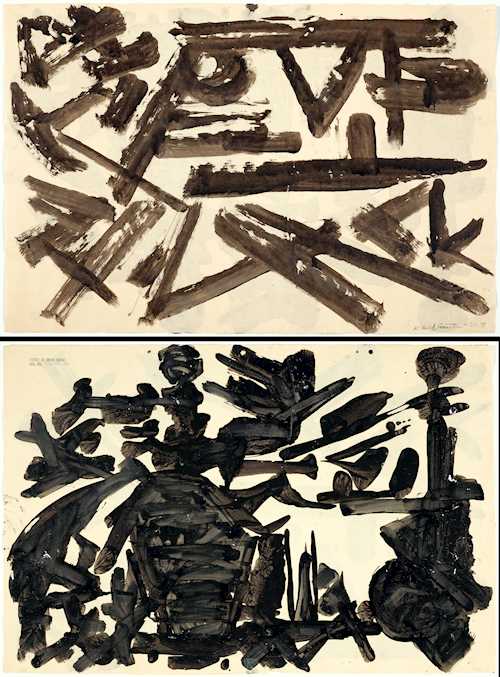

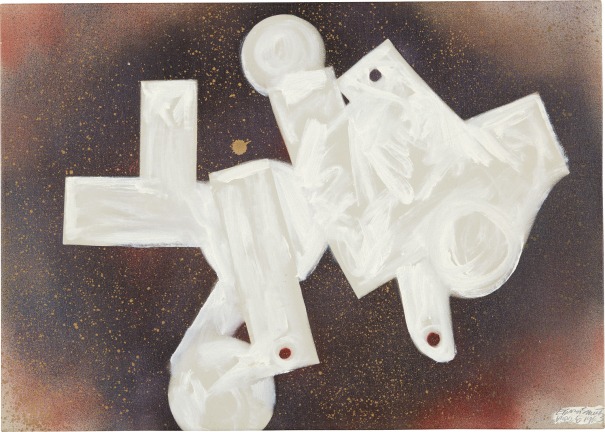
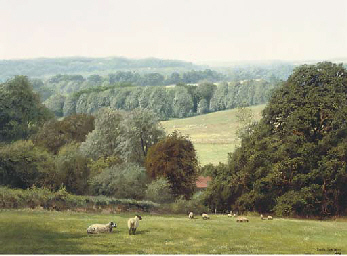
.jpg)



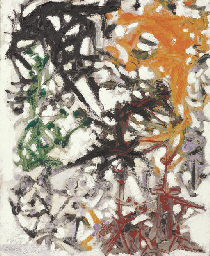
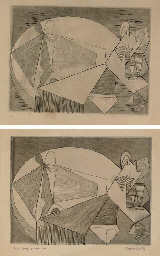
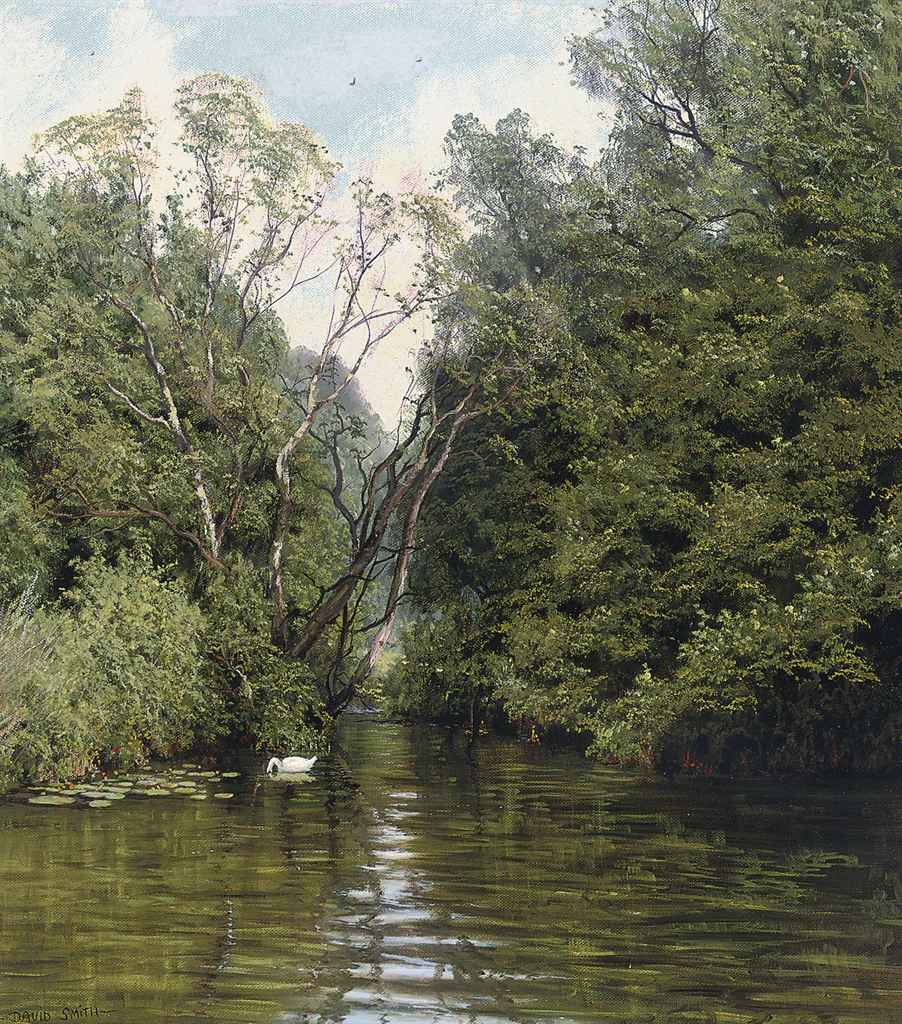
.jpg)
Testen Sie LotSearch und seine Premium-Features 7 Tage - ohne Kosten!
Lassen Sie sich automatisch über neue Objekte in kommenden Auktionen benachrichtigen.
Suchauftrag anlegen